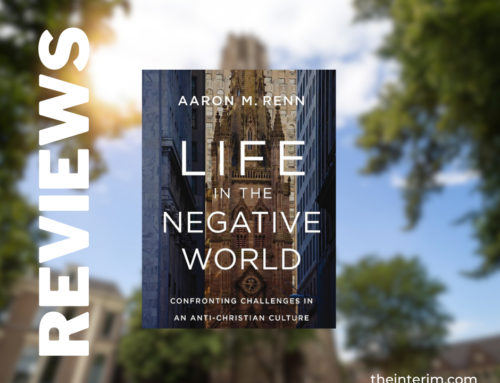Despite an inauspicious beginning, the National Post, which began publishing one year ago this month, has been a boon for pro-life and pro-family Canadians desperate for principled journalism from the mainstream media.
The Post published its inaugural issue in the days following the murder of abortionist Bernard Slepian. It ran a cartoon which implied the pro-life movement was behind his death and depicted pro-lifers as sinister snipers.
Since that episode, however, the paper’s sense of fairness in reporting, diversity of commentary and its editorial stance have been much better. The past year has seen some major stories break: the conviction of Robert Latimer, eugenic infanticide at a Calgary hospital, the advance of the gay rights agenda in both Parliament and the courts, proposals for universal daycare, the legalization of child pornography, and studies crediting the legalization of abortion for reductions in crime. Through it all, the Post has objectively reported the stories and opened its commentary pages to many views, including pro-life and pro-family voices.
 The news reporting is excellent. It does not use labels such as “right-wing” or “extremist” to describe moral conservatives or their positions. There is an effort to use unbiased language and a diversity of sources to report the news. There doesn’t seem to be any attempt to manipulate stories or present the paper’s position in its news stories. This is in stark contrast to many other newspapers that all too often allow their opinion to enter their news coverage.
The news reporting is excellent. It does not use labels such as “right-wing” or “extremist” to describe moral conservatives or their positions. There is an effort to use unbiased language and a diversity of sources to report the news. There doesn’t seem to be any attempt to manipulate stories or present the paper’s position in its news stories. This is in stark contrast to many other newspapers that all too often allow their opinion to enter their news coverage.
Furthermore, they regularly cover important moral issues. For instance, their coverage of allegations of eugenic infanticide at Calgary’s Foothills Hospital and the police investigation of those allegations was the most thorough of any daily newspaper outside Alberta. Despite charges that the Post is just a right-wing paper that Conrad Black uses to advance his agenda, the commentary page has been remarkably responsible, opening itself to many viewpoints, liberal, conservative and libertarian. For instance, in August it ran three columns (including one by Interim editor David Curtin) on the study purporting to show a relationship between crime reduction and the legalization of abortion. They also regularly publish reliable moral conservative voices such as Vancouver’s Susan Martinuk and London’s Ian Hunter.
The voice of the newspaper is the editorial page, and with few exceptions Canada’s dailies are consistently left-leaning on moral issues. The Post is notably different. Generally, the editorial page is skeptical of government intervention. They have therefore criticized schemes to implement universal daycare. They have a general inclination to defend conservative moral values, including the traditional understanding of the family. Thus, the editorial page has attacked bubble-zone laws which prohibit free speech, the “stillborn investigation” of the Foothills Hospital infanticide allegations, attempts to remove God from the Constitution, and judicial activism, especially court rulings that allow the possession of child pornography. (The Post’s main rival, the Globe and Mail, worried that child porn prohibitions were too restrictive and reeked of homophobia.) The Post has also questioned the gay rights agenda.
On the issue of abortion, determining which side of the fence the Post sits on editorially is a much tougher exercise. It seems inclined to oppose abortion but criticisms of it are limited to pointing out inconsistencies in pro-abortion arguments. In an exceptionally strong column (July 3) it poked fun at Health Minister Allan Rock’s “Abortion acrobatics,” noting the inconsistencies of the “pro-choice” argument. Health Canada was considering the issue of sex-selection abortion and the Post wondered “if aborting girls devalues the female, why does aborting humans not devalue human beings?”




